Lounge Chair Ottoman
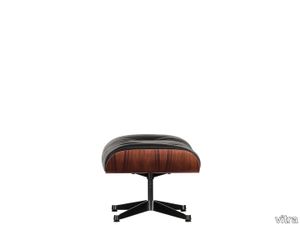
vitra > Pouf
The matching Ottoman is an ideal companion piece for the Lounge Chair by Charles and Ray Eames – allowing users to sit back, put up their feet and enjoy its full comfort. The Ottoman fits both versions of the Lounge Chair – with classic or new dimensions.
Eames Plastic Armchair beam seating
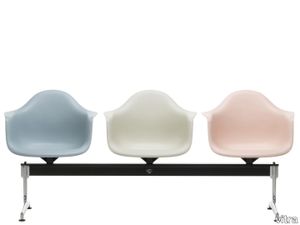
vitra > Chair
The Plastic Armchairs by Charles and Ray Eames, which are counted among the most important furniture designs of the twentieth century, are also available as beam seating. Configurations in various lengths can be equipped with small table elements between the seat shells, making the units especially well suited for public waiting areas in which the furnishings should not only provide excellent comfort and robust durability, but also contribute to an inspiring ambience.
Mariposa 2 1/2-Seater
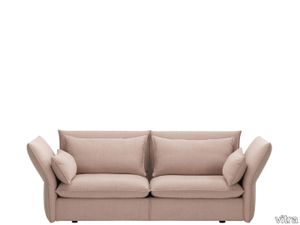
vitra > Sofa
Pleasantly soft upholstery and side and back panels that can be adjusted to an outward angle of approximately 30° give the Mariposa Sofa (2014) by Edward Barber and Jay Osgerby its extraordinary comfort.
Repos & Ottoman
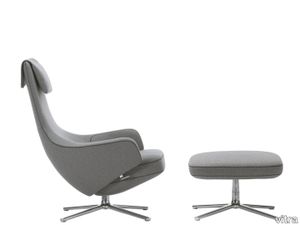
vitra > Chair
The exceptional comfort of the elegant Repos lounge chair is even further enhanced when paired with the Ottoman, as users can put up their feet and relax. A lockable, synchronised mechanism, concealed within the upholstery, adapts automatically to the user's weight guaranteeing optimum back support in every position.
Akari 75D
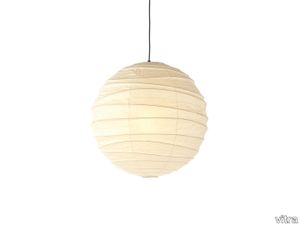
vitra > Styling
The Akari Light Sculptures (1951) by Isamu Noguchi are a series of luminaires, handcrafted from traditional washi paper by Japanese artisans. ‘The harshness of electricity is thus transformed through the magic of paper back to the light of our origin – the sun.’ (Noguchi)
Grand Sofà 3-Seater
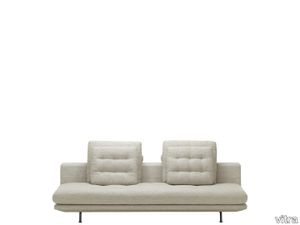
vitra > Sofa
Grand Sofà (2017) is Antonio Citterio's interpretation of luxurious comfort and contemporary design. The designer's Italian flair for lightness and elegance is united with the trademark quality and precision of the Swiss company Vitra.
Happy Bin Large
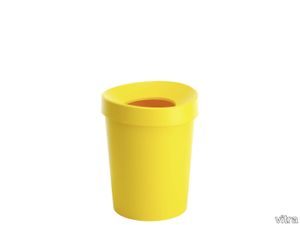
vitra > Styling
Happy Bin by Michel Charlot has a slightly irregular organic shape which gives the impression of a small sculpture. The waste paper bin is made of robust plastic and comes in two sizes and a selection of colours.
Wooden Doll No. 16

vitra > Styling
Alexander Girard originally created the Wooden Dolls (1952), a whimsical assortment of figures both joyful and grim, for his own home. Today they add a charming touch to any interior.
AC 5 Studio
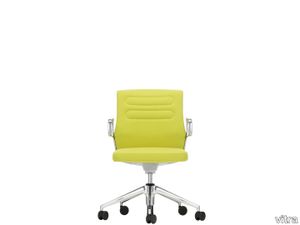
vitra > Office Chair
AC 5 Studio is the reductive, informal model of the AC 5 Group of office chairs. Equipped with functions suited for its intended applications – a rocking mechanism and a height adjustment feature – AC 5 Studio provides a comfortable seating solution for touchdown workstations occupied by changing users. Its characteristic angled backrest is not just a unifying visual element shared by all chairs of the AC 5 Group; thanks to its shape, the flexible backrest structure also offers considerable freedom of movement and promotes dynamic sitting.
Embroidered Pillows - Double Heart, red
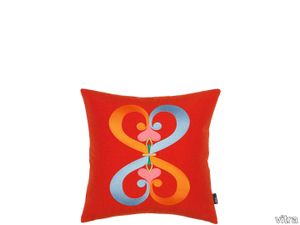
vitra > Styling
In 1957, Alexander Girard designed the interior of the legendary Miller House and decorated the so-called 'conversation pit' in the living room with specially embroidered pillow covers. The Embroidered Pillows feature motifs from the vast store of graphic images by Girard.
Miniatures Tulip Chair
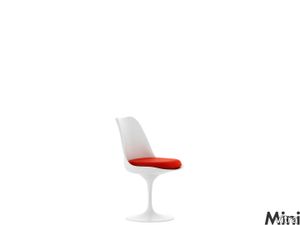
vitra > Styling
The Tulip Chair is one of a series of chairs, stools, and tables developed by Eero Saarinen within a five-year period. The characteristic feature of the series is that the supporting structure has been pared to a central supporting stem »like a wineglass« in order to emphasise the uniformity of table and chair.<br/><br/>Eero Saarinen describes the Tulip Chair: »The bases of tables and chairs in a typical furniture arrangement create an ugly, confusing, and restless world. I wanted to design a chair as an integrated whole once again. All important furniture of the past always had a holistic structure, from King Tut's chair to that of Thomas Chippendale. Today, we are parting ways with this holism with our predilection for plastic and laminated wood shells. I am looking forward to the point when the plastics industry will be capable of manufacturing the chair using just one material, the way I have designed it.«
Miniatures LCM
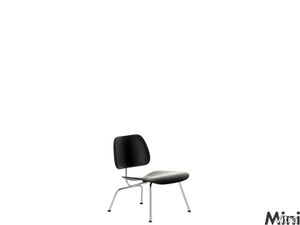
vitra > Styling
Charles Eames and Eero Saarinen designed a chair in 1940 with a new type of three-dimensional preshaped plywood seat for a competition held by the New York Museum of Modern Art. The chair did not go into production owing to a lack of technical know-how. It was very rare back then for plywood to be successfully pressed into a three-dimensional shape. In the years that followed, Charles and Ray Eames concentrated on developing a process that enabled plywood to be shaped as they wanted.<br/><br/>The »Plywood Chairs« DCW (Dining Chair Wood), LCW (Lounge Chair Wood) and the versions with metal legs, namely DCM (Dining Chair Metal) and LCM were the result of these years of experimentation. In 1945 Charles and Ray Eames again took up the idea of a seat made of formed plywood without, however, coming up with satisfactory solutions. As a consequence, they rejected the idea of a multifunctional seat and decided to treat seat and back as separate, freely articulated elements that were linked with each other via a backbone – the frame. Each component is therefore reduced to a clearly defined function which it fulfills with a minimum of materials being used. The rubber »shock mounts« glued onto the wood enable the seat and back to be connected to the frame.
Miniatures Antony
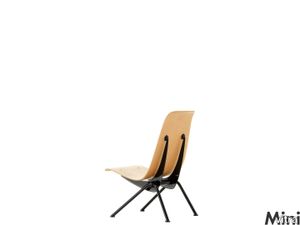
vitra > Styling
The architect, engineer and designer Jean Prouvé was intent both in his architectural and design work on employing highly-advanced metal working techniques to create innovative constructions and shapes. He played an influential role in developing a construction method for architecture based on lightweight prefabricated sections, and drew amongst other things on this knowledge of aircraft and car construction. In 1947, he set up his own company Ateliers Jean Prouvé, which not only produced these lightweight elements, but also his own furniture designs.<br/><br/>In 1955, Prouvé took part with the support of the French designer group Union des Artistes Modernes, in a competition for the furnishing of a student residence in Antony near Paris. Collaborating with Charlotte Perriand, he produced an exemplary furniture series for the leisure area, the cafeterias and a series of rooms in the student residence. His series included the chair shown here, which Prouvé had designed a similar version of for Strasbourg university as early as 1950.<br/>
Miniatures Lockheed Lounge

vitra > Styling
Marc Newson originally produced the Lockheed Lounge as the centerpiece of an exhibition of his pieces at the Roslyn Oxley Gallery in Sydney. It was widely acclaimed and was bought by the National Gallery of Australia. <br/><br/>Its concept was based »loosely, very loosely« on the chaise longue in Jacques-Louis David's 1800 portrait of Madame Recamier. »I had this image of a fluid, aluminium form. The shape was sculpted out of a piece of foam, the exact same way you'd create a surfboard. The only way to get the aluminium on was to beat little pieces of metal into shape with a wooden mallet and attach them with rivets. That's where the airplane metaphor came from. So I called it the Lockheed Lounge.
Miniatures Ribbon Chair
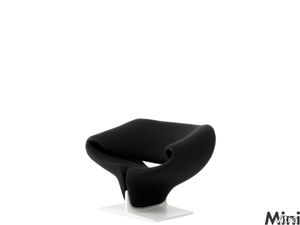
vitra > Styling
The enthusiastic, progressive atmosphere of the 1960s and Pierre Paulin's sculptural training were influential factors in the design of the Ribbon Chair. The curving loops of its shape, covered in colourful upholstery fabrics or psychedelic patterns by Jack Lenor Larsen, give it a captivating, futuristic appeal. Pierre Paulin himself interpreted the Ribbon Chair as a "coup de pied à la lune". A famous advertisement shows the Ribbon Chair on a runway with a jet taking off above it. <br/><br/>The seat, backrest and armrests of the chair have a unified metal frame that is completely covered with foam upholstery and stretch fabric. The seat is mounted on a lacquered pedestal made of pressed wood. The de-velopment of the Ribbon Chair was facilitated by technological innovations during the Sixties, which led to the production of inexpensive synthetic foams. This period also saw the introduction of novel elastic fabrics that could be used to envelop a complex contoured shape without folds or intricate seams. The biomorphic, slightly resilient seat of the Ribbon Chair allows a wide variety of sitting positions and provides a high degree of seating comfort.
Miniatures Rood blauwe stoel
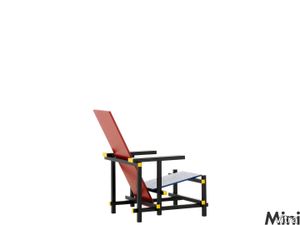
vitra > Styling
Gerrit Rietveld conceived of each piece of furniture as an ideal, abstract composition of surfaces and lines in space. The rigor with which he put this into practice makes »Roodblauwe stoel« a key object in modern furniture design. The form of abstraction Rietveld adopts here bears comparison to painter Piet Mondrian. <br/><br/>Mondrian, and later Rietveld, were among the artists and architects who grouped around Theo van Doesburg and his journal »De Stijl«, and whose radical concepts had a lasting impact on twentieth-century art. Rietveld reduced given realities to their linear and surface characteristics. Where Mondrian took landscapes as his model, Rietveld focused on the concept of a traditional, massive armchair, which he transformed into a geometric entity.
Miniatures Standard Chair
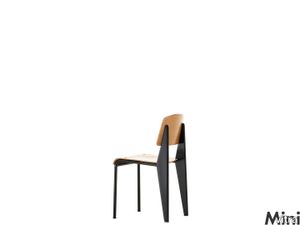
vitra > Styling
Designed in 1934 the Standard Chair is one of the quiet classics of history of design. Prompted by the furniture competition for the Cité Universitaire of Nancy, Prouvé worked on designs combining metal and wood during the early thirties. <br/><br/>He utilised the strength of steel for the base of Standard Chair. The back and the seat however, which come in direct contact with the sitter's body, are formed out of plywood. The quality of this chair is revealed in its structure and unassuming aesthetics.
Miniatures Stool (Model C)

vitra > Styling
Charles and Ray Eames received a commission to design the interiors of three lobbies in the new Time & Life Building at Rockefeller Center in New York City. In addition to outfitting these spaces, this major project encompassed the development of the comfortably upholstered Lobby Chairs and a group of stools made out of solid walnut. <br/><br/>The lathe-turned stools, which were also conceived by Ray to be used as small occasional tables, have distinctive individual profiles. The sculptural and decorative character of the stools makes the most striking impression when they are grouped together.These pieces were inspired by an African stool that stood in the living room of the Eames House, as shown in a photographic series by Monique Jacot from the year 1959.
Miniatures Tom Vac Chair
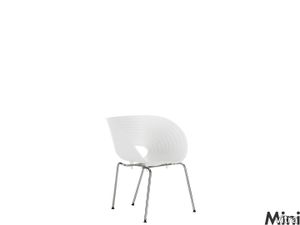
vitra > Styling
The Tom Vac Chair was first realized as one element in a sculpture consisting of 70 stacking chairs named »Totem«. Commissioned by the magazine Domus, it was set up in the centre of Milan during the Salone del Mobile in 1997.<br/><br/>The seat shell with the characteristic wave profile is based on earlier versions Ron Arad sketched for the dining room of a house in Tel Aviv. The first small series for »Totem« was created in just four months. Though it is a complicated metal to manufacture, vacuum-formed aluminium proved to be a suitable material.<br/><br/>In collaboration with furniture maker Vitra, for whom he had already produced the Well Tempered Chair back in 1986, Ron Arad developed, within a very short time, a version of the Tom Vac Chair suitable for mass production. Seen within the context of Arad's complete work, which is largely characterized by »one offs«, the chair is something of an innovation by virtue of its industrial and by extension inexpensive production. While the design of the Tom Vac Chair only deviates minimally from the first plan, the flexible seat shell of polypropylene offers a high degree of comfort.
Miniatures Barrel Chair
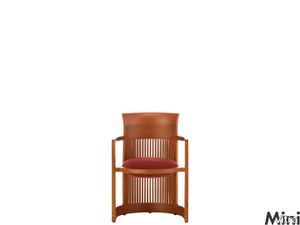
vitra > Styling
Originally designed by Frank Lloyd Wright in 1904 for the D. D. Martin House in Buffalo, New York, this iconic chair was an embarkation from his earlier linear furniture designs, due to its round shape.<br/><br/>Original features included a flared backrest, square spindle supports and a cushioned double-sided circular seat. In 1937, Frank Lloyd Wright re-created the Barrel Chair design in a larger version with other design modifications for the residence of Herbert F. Johnson, known as »Wingspread«, to accommodate the expansive rooms and towering ceiling heights.
Soft Modular Sofa Three-seater
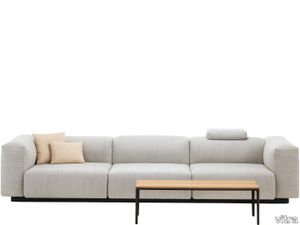
vitra > Sofa
With carefully balanced proportions, great comfort and a conscious renunciation of decorative details, the Soft Modular Sofa (2016) by Jasper Morrison unites the characteristics of a modular lounge sofa in its purest form.
Grand Conference
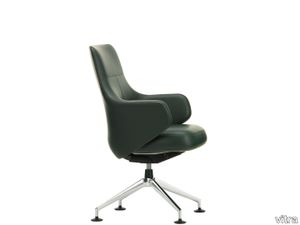
vitra > Chair
Grand Conference is a visitor and conference chair designed by Antonio Citterio that pairs extraordinary comfort with an impressive, dignified appearance. Together with Grand Executive, Grand Repos, Repos and Petit Repos, it forms a group that lends a unified look not only to meeting and conference spaces, but also to offices, lobbies, waiting zones and reception areas.
HAL Ply Barstool
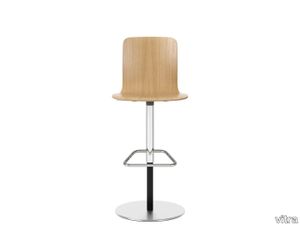
vitra > Stool
The swivel-mounted HAL Ply Barstool features gas spring-assisted height adjustment for seating at tables and counters from 90 to 110 cm tall, along with additional shock-absorbing seat suspension to ensure dynamic comfort. The seat shell is made of high-quality, easy-to-clean plywood, while the column sleeve, footrest and base plate with a brushed stainless steel cover are manufactured from steel. HAL Ply Barstool is suited not just to bars and restaurants but also to offices with standing-height meeting tables or desks.
Miniatures Bocca

vitra > Styling
The use of cold-expanded polyurethane makes traditional methods of constructing furniture redundant. One series of sculptural furniture objects stands out amongst the furniture designs of the »Studio 65« group, since it makes radical use of the freedom of design allowed by this new material. And the style of this furniture demonstrates characteristics originating in the pictorial arts of the 1960s: the softening of a Claes Oldenburg, the naive stylization to be found in comics and commercial art, or the giant, intoxicated dimensions assumed by 1960s objects.<br/><br/>Alongside an armchair in the shape of a pillared Greek temple and a Babylonian shrine as a playsystem for children, Studio 65's contribution to the »radical design« included a sofa in the shape of a woman's mouth. The subtitle Studio 65 gave to its Sofa Bocca: »alias lips, alias Marylin«, is a reference to the inspiration for this design and its symbolism. Salvador Dalí, to whom the idea for a design of this kind has been attributed, was quoted by Studio 65 in this context as follows: »Objects with a symbolic function leave no room for formal considerations. They are characterized only by each individual's idea of love and are above any notions of shape.«<br/>
Wooden Doll No. 20
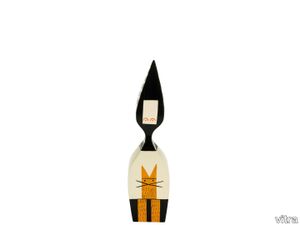
vitra > Styling
Alexander Girard originally created the Wooden Dolls (1952), a whimsical assortment of figures both joyful and grim, for his own home. Today they add a charming touch to any interior.
Miniatures Butterfly Stool
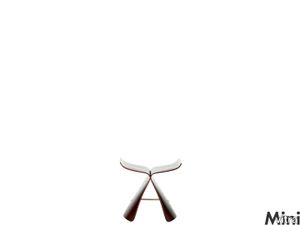
vitra > Styling
As a student in the 1940s Sori Yanagi accompanied Charlotte Perriand on her trips through Japan, thus becoming familiar with the classical Moderns. It is possible that this is what aroused Yanagi's interest in seating, something which does not exist in Japanese culture. Even today a large number of Japanese households manage without any kind of seats, even in the cities, since it is traditional to sit on the floor on tatami mats.<br/><br/>In view of the above Yanagi's Butterfly stool can be described as unusual on a number of counts. The designer adopts a familiar Western shape and combines it with a technique employed by Charles and Ray Eames which involves using bent plywood for industrial manufacture. The stool is unusually cleverly constructed, with two identical shapes connected axisymmetrically by means of two screws underneath the seat and a screwed on brass rod. This creates a shape reminiscent in some ways of the torii (gates) to Shinto shrines, which gives the stool an oriental look. At the same time it calls to mind the wings of a butterfly, hence its name. The stool was awarded the gold medal at the 1957 Milan triennial.<br/>
Miniatures Favela
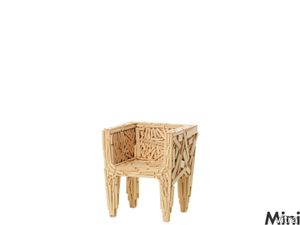
vitra > Styling
The Favela armed chair is one of the most striking works by the Brazilian designers Fernando and Humberto Campana. According to a statement by the brothers, the architecture of the typical shanty towns in their native country was the inspiration for the design and name of this extraordinary item of seating furniture. <br/><br/>Like the majority of hut-like dwellings, the favela is also nailed and glued together from oddments and waste materials. The Campanas made use of small, differently-sized strips of wood, as are produced in abundance in every joinery, for their representative chair.<br/><br/>In the Favela, they prove that objects of singular elegance and beauty can even originate from apparent mundane, worthless materials. Over and above this, the Favela throws a new light on the dynamic relationship between a one-off design and a mass-produced product. Although every chair is made from the same material and to an identical construction plan, each finished article still retains its individuality in the detail.
Akari 45A
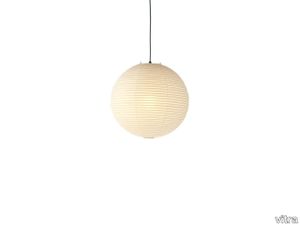
vitra > Styling
The Akari Light Sculptures (1951) by Isamu Noguchi are a series of luminaires, handcrafted from traditional washi paper by Japanese artisans. ‘The harshness of electricity is thus transformed through the magic of paper back to the light of our origin – the sun.’ (Noguchi)
Akari BB3-55DD
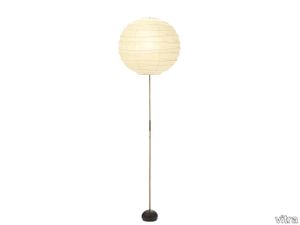
vitra > Styling
The Akari Light Sculptures (1951) by Isamu Noguchi are a series of luminaires, handcrafted from traditional washi paper by Japanese artisans. ‘The harshness of electricity is thus transformed through the magic of paper back to the light of our origin – the sun.’ (Noguchi)
Grand Executive Lowback
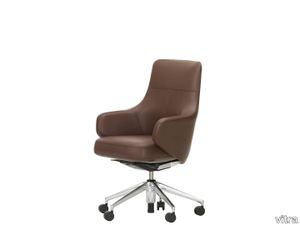
vitra > Office Chair
The prestigious Grand Executive armchair combines soft, high-quality leather upholstery with the individually adaptable FlowMotion mechanism for exceptional comfort. The Grand Executive Highback model is equipped with an adjustable neck cushion.
Akari E

vitra > Styling
The Akari Light Sculptures (1951) by Isamu Noguchi are a series of luminaires, handcrafted from traditional washi paper by Japanese artisans. ‘The harshness of electricity is thus transformed through the magic of paper back to the light of our origin – the sun.’ (Noguchi)
Akari UF1-H
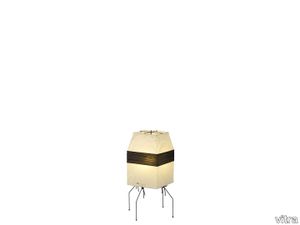
vitra > Styling
The Akari Light Sculptures (1951) by Isamu Noguchi are a series of luminaires, handcrafted from traditional washi paper by Japanese artisans. ‘The harshness of electricity is thus transformed through the magic of paper back to the light of our origin – the sun.’ (Noguchi)
Wall Clocks - Turbine Clock
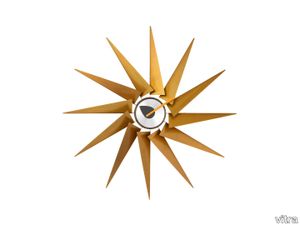
vitra > Styling
With his collection of Wall Clocks (1949-1960), George Nelson conceived a wide array of timepieces, many of which have since become icons of 1950s design.
Unix Chair, four-star base

vitra > Chair
The Unix Chair by Antonio Citterio is available with an elegant four-star base. The swivel chair's vertical spring suspension and high-tech knit covers guarantee superb comfort even through long meetings and conferences. The Unix Chair can also be fitted with fabric covers.
Wall Clocks - Wheel Clock
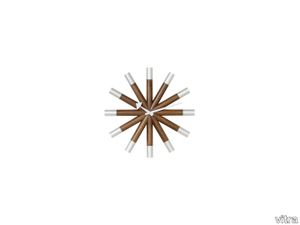
vitra > Styling
With his collection of Wall Clocks (1949-1960), George Nelson conceived a wide array of timepieces, many of which have since become icons of 1950s design.
WorKit meeting tables

vitra > Table
In combination with WorKit workstations, the WorKit meeting tables lend a unified appearance to the entire office space. Thanks to the understated design of the tables, they can also be used together with other furniture types and complement a wide variety of office environments and interior concepts. The WorKit meeting tables are available in three sizes for 8 to 12 people, with or without electrification and with melamine or veneer table tops.
Freeform Sofa, Freeform Ottoman
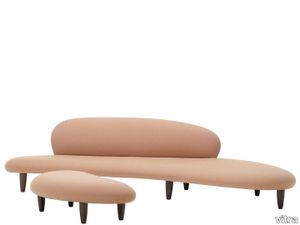
vitra > Sofa
The sculptural quality of Noguchi's design vocabulary finds expression in the Freeform Sofa: it is entirely different from other designs of the same period, appearing in combination with the Ottoman like an enlarged sculpture of flat, rounded river stones. The slender organic forms are fluid and graceful. Noguchi emphasises the lightness of the elements with thin yet comfortable upholstery and a choice of cover fabrics in natural colours.<br/><br/>The Freeform Sofa and companion Ottoman were produced around 1950 in limited numbers. Today, the few remaining pieces achieve record prices at auction. Since 2002, the group has been produced by the Vitra Design Museum as a fully authentic re-edition. The sofa is suitable not only for use in living spaces, but also in lobbies, hotels and retail shops.
Wooden Doll No. 9

vitra > Styling
Alexander Girard originally created the Wooden Dolls (1952), a whimsical assortment of figures both joyful and grim, for his own home. Today they add a charming touch to any interior.
Bistro Stand-up Table
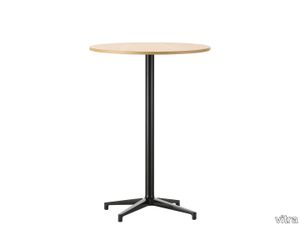
vitra > Table
The Bistro Tables were developed by Ronan and Erwan Bouroullec in conjunction with the Softshell Chair and feature the same elegant cruciform base. Thanks to an understated design, the Bistro Tables can be used in a wide variety of interior settings. In versions with a solid core top, the round standing-height tables (110 cm high) are also suited for outdoor use.
Freeform Ottoman

vitra > Pouf
As a companion piece, the Freeform Ottoman can be freely positioned around the sofa, allowing users to enjoy the latter's full comfort.
Wall Clocks - Polygon Clock
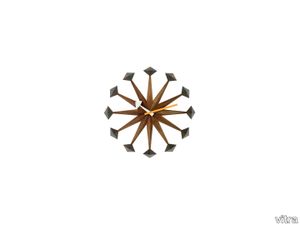
vitra > Styling
With his collection of Wall Clocks (1949-1960), George Nelson conceived a wide array of timepieces, many of which have since become icons of 1950s design.
Super Fold Table
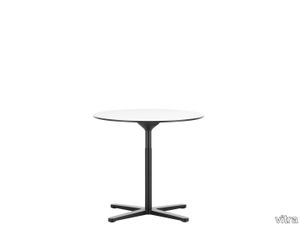
vitra > Table
The Super Fold Table by Jasper Morrison folds up completely with a single movement of the hand, and the legs of the four-star base are also rotated and vertically aligned for compact space-saving storage. The Super Fold Table comes in a range of materials, with different shaped table tops. It is available in both sitting and standing height versions.
Ottoman
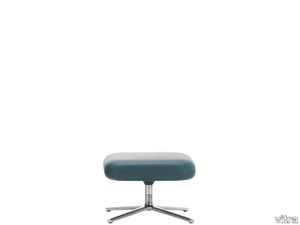
vitra > Pouf
As a companion piece for Repos and Grand Repos, the Ottoman enhances the extraordinary comfort of these lounge chairs by allowing users to put their feet up and relax.
Coffee Mugs - Love Heart, crimson

vitra > Styling
The designer and architect Alexander Girard created a number of restaurant interiors, for which he also developed coordinated objects and accessories. The motifs featured on the Coffee Mugs have their origins and inspiration in these rich and varied environments.
Tyde 2 Meeting Tables
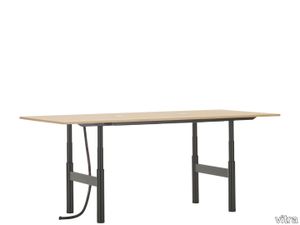
vitra > Table
The sit-stand table system Tyde 2 (2021) by Ronan & Erwan Bouroullec offers such extensive configuration options that entire platforms can be created, with solutions for concentrated tasks, teamwork and meetings.
Alcove Work
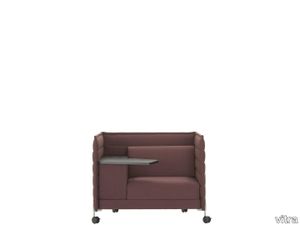
vitra > Sofa
When sitting in Alcove Work Highback, the user is scarcely visible or audible to the outer environment. The integrated writing tablet with power and data options makes this version a flexible retreat for concentrated individual work in an open-plan office.<br/><br/>The Alcove Work Lowback model shields the user slightly less and therefore invites communicative interaction with the surroundings. By grouping several Alcove Work Lowback together, the individual workstations are transformed into a meeting configuration, without any need for a conference table.
Flower Table, small
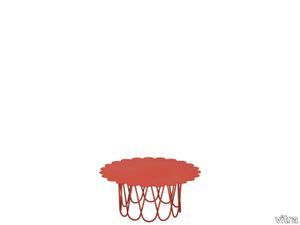
vitra > Coffee table
The Flower Table (1977) was originally designed by Alexander Girard for the interior furnishings of the legendary Miller House in Columbus. Made of powder-coated steel, it is also suited for outdoor use.
Living Tower
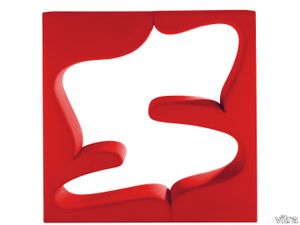
vitra > Styling
The organically shaped Living Tower furniture sculpture by Verner Panton can be used on four different levels. Over two metres high, the appealingly upholstered seating tower has a stable frame made of birch plywood. The cleverly arranged interior niches can be used in sitting and reclined positions, encouraging communication and relaxation.
Plywood Group LCW

vitra > Chair
The small Lounge Chair Wood (LCW) is an iconic design by Charles and Ray Eames that dates from the period of their early experiments with three-dimensionally moulded plywood.
